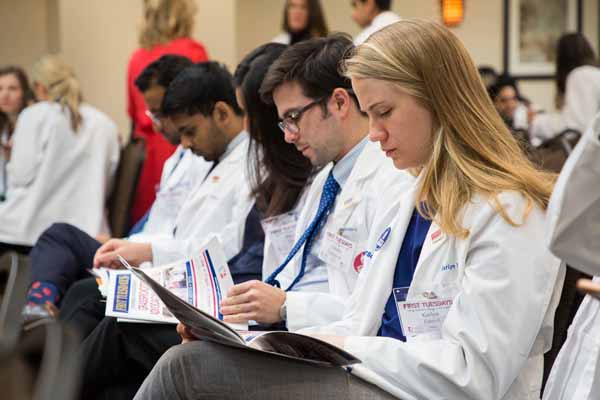
Going into the 2021 legislative session, Texas medical educators were understandably nervous. The economic fallout from the COVID-19 pandemic had thrown future growth of graduate medical education into doubt.
Texas Comptroller Glenn Hegar projected in July 2020 that the pandemic had created a state deficit of $4.6 billion. In response, Texas Gov. Greg Abbott directed state agencies to adjust their budgets for 2021 to reflect a 5% reduction, with some exemptions, which resulted in a $7 million cut in 2021 to the state’s Graduate Medical Education (GME) Expansion Grant Program
While the program was able to absorb the initial blow without hurting residency programs, the problem was ensuing proposals for the state’s 2022-23 biennial budget called for even deeper cuts.
Fortunately, that fate was averted when in May, the comptroller’s office revised the deficit to a $725 million surplus. In the final 2022-23 budget, at the urging of Senate budgetmakers, the Texas Legislature allocated an additional $49 million for the state’s GME Expansion Grant program, an increase of 27% for a total of $199 million, according to Stacey Silverman, assistant commissioner of the Texas Higher Education Coordinating Board (THECB).
More than 400 first-year residency positions have been created through the grant program since 2014, including 135 during the state’s 2020-21 biennial budget period, says Marcia Collins, associate vice president for medical education at the Texas Medical Association. Without a funding boost, there would be no money to refill the newly created first-year positions or to create another round of first-year positions. (See “GME Momentum,” April 2021 Texas Medicine, pages 20-25, www.texmed.org/GMEMomentum.)
That might have forced GME programs statewide to cut funding for up to 170 first-year residency positions statewide by July 2022, says Woodson “Scott” Jones, MD, vice dean of GME and designated institutional official for the UT Health San Antonio Long School of Medicine.
In written testimony for the Senate Finance committee, then-TMA President Diana Fite, MD, praised lawmakers for their past commitment to “building and expanding the state’s physician workforce pipeline through the generous support of a variety of state programs.” But, she added, “Texas needs an additional 250 first year GME positions by 2024 to maintain the state’s target ratio of 1.1 to 1 for the number of first-year residency positions per Texas medical school graduate.”
Meeting that ratio is important to keep new physicians in Texas, Dr. Jones says.
“If we keep them in state for both GME and medical school, we have an 80-plus percent likelihood that they’ll stay and practice in the state of Texas,” he said. “And it goes down to about 50% if they leave the state for their GME.”
The improved funding lawmakers ultimately approved should maintain existing residency positions and pay for about 50 new first-year residency slots statewide through the next biennium, Ms. Silverman says.
That’s extremely happy news, says Jonathan MacClements, MD, associate dean of GME at The University of Texas at Austin Dell Medical School.
“The GME expansion [grant program] maintained and increased in size because in the midst of all things COVID, [lawmakers] realized that ensuring that we had a future workforce in the health care professions was clearly [needed],” he said.
Despite growth in expansion grant funding, some physician workforce pathway programs still sustained cuts of up to 5%, says Ms. Collins. They include the Family Practice Residency Program, Statewide Primary Care Preceptorship Program, and Joint Admission Medical Program. Also, the State Physician Education Loan Repayment Program was cut by 3%.
Nevertheless, GME benefited during this session, and Sen. Jane Nelson (R-Flower Mound), chair of the Senate Finance Committee, was a critically important advocate, Dr. Jones says.
“We’re ecstatic with the support in a very tight budget year,” he said.
Physician-legislators like Sen. Donna Campbell, MD (R-New Braunfels), and Sen. Charles Schwertner, MD (R-Georgetown), also were instrumental in boosting the overall GME funding levels.
State lawmakers also allocated $385 million for medical student education, about $45,000 per student, for each year of the 2022-23 budget. They added $49 million to contribute to teaching costs for residents, or about $5,700 per resident, for each year of the biennium. These amounts were largely unchanged from the previous budget, Ms. Collins says.
In a surprise move, lawmakers added $80 million to the state budget at the last minute to help fund the state’s the health science centers. Details about how the $80 million will be spent will be determined in the coming months, Ms. Collins says.